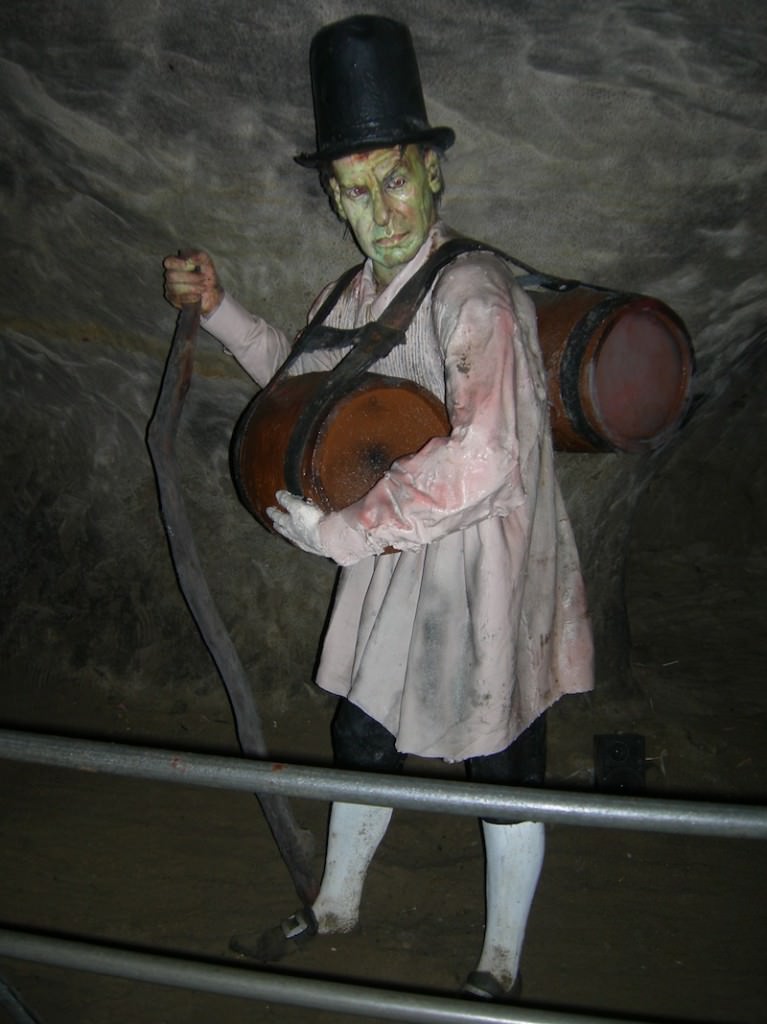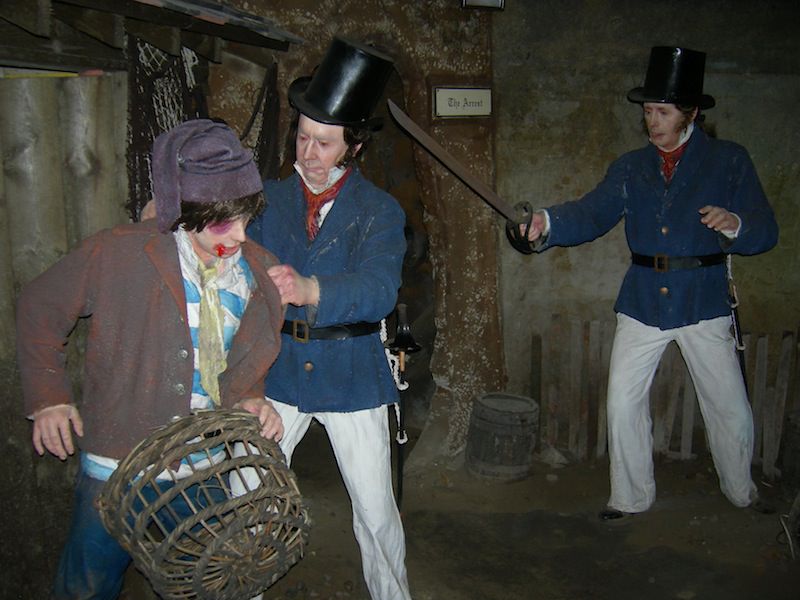In 1786, 34-year old Joseph Golding was cutting a garden seat into the side of a cliff overlooking the famous coastal town of Hastings, England when his pick broke through the rock. He gazed in awe down into a vast cavern. Golding had accidentally rediscovered a rabbit’s warren of secret tunnels and passageways that reopened a period of England’s most infamous history. When exploring the caverns, Golding discovered long forgotten remnants of the town’s thrilling history of pirates, smugglers, bootleggers and warring gangs, that were used from the early 1700’s on for their nefarious purposes.
Today, overlooking Hastings’ atmospheric Old Town, the city’s West Hill conceals acres of caverns carved into the sandstone hills. Since their discovery in Victorian times, St.Clements Caves Smugglers Adventure has become one of the town’s major attractions, telling the story of the smugglers who hid their contraband of rum, brandy, tea, and spice there. Display boards explain how the exorbitant taxes in the 18th century were used to finance Britain’s foreign wars. “Tubmen”, or local smugglers, were paid 10 shillings per night to carry tubs of contraband from the beach to the various hiding places in caves along the shoreline, and in Hastings town itself. Each tub was a small barrel with 3-4 gallons of brandy or rum. Records show that the local riding officer (sheriff), nicknamed “Hawk’s Eye”, was bribed with brandy to leave them alone.

A tubman hauls his barrel of brandy into the caves. They were paid 10 shillings a night for their strong backs.
Today, spread throughout these dimly lit caves, more than 70 life-size figures and dioramas depict the turbulent lives in the bloodthirsty age of the smuggler, from their pitched battles with the local authorities, to the grisly punishments they faced when caught. Tales abound of ghostly apparitions of smugglers appearing in these caves, especially around the small, mysterious chapel with the figure of a religious icon carved into its walls.
Smuggling was a very lucrative enterprise, so it’s not surprising that the vicious Hawkhurst Gang, the most notorious of the smuggling clans from 1735 to 1749, was not afraid to confront customs authorities. The Smugglers Adventures displays tell how the Hawkhurst Gang ambushed a local revenue party of dragoons to recover confiscated, smuggled tea, and on another occasion, raided a revenue house at Poole to regain two tons of tea that had been taken from them.
Other gruesome dioramas in the caves tell of the pitched battles the smugglers fought to protect their loot against the customs agents. Ironically, the fierce battles on the beaches, sometimes involving 200 people or more, were often fought between smugglers and local soldiers who had served in the same regiments in foreign campaigns.
Smuggling employed thousands of local people “supported in drunkenness, rioting, and debauchery by their iniquitous traffic”. Eventually though, the gang’s brutality turned the residents against them. Several of the gang leaders met a grisly end on the gallows as they were hunted down. One of the caves’ dioramas shows a smuggler sitting in his jail cell, contemplating his fate. Punishments for smuggling were severe, starting with imprisonment in the early 1700’s, and by 1746 smugglers were regularly hanged, with their bodies often being placed in a gibbet as a warning to others.
Dash a bottle of brandy in his face and he's as blind as a beetle, reads the caption to this diorama. It shows a smuggler bribing the local riding officer (sheriff) with a bottle of brandy.
In 1977, a sawn off arm bone, more than 150 years old was unearthed in the caves. It is believed that it is a remnant of the military hospital that was set up in the caves during the Napoleonic Wars from 1793-1815. Interestingly, just down the hill from the caves is the All Saints Church, where you can still see smuggler’s graves marked with the skull and crossbones. Several of Hastings’ local taverns still have secret hiding places where the smugglers would lie low until the customs men moved on.
Written by Roy Stevenson for EuropeUpClose.com


